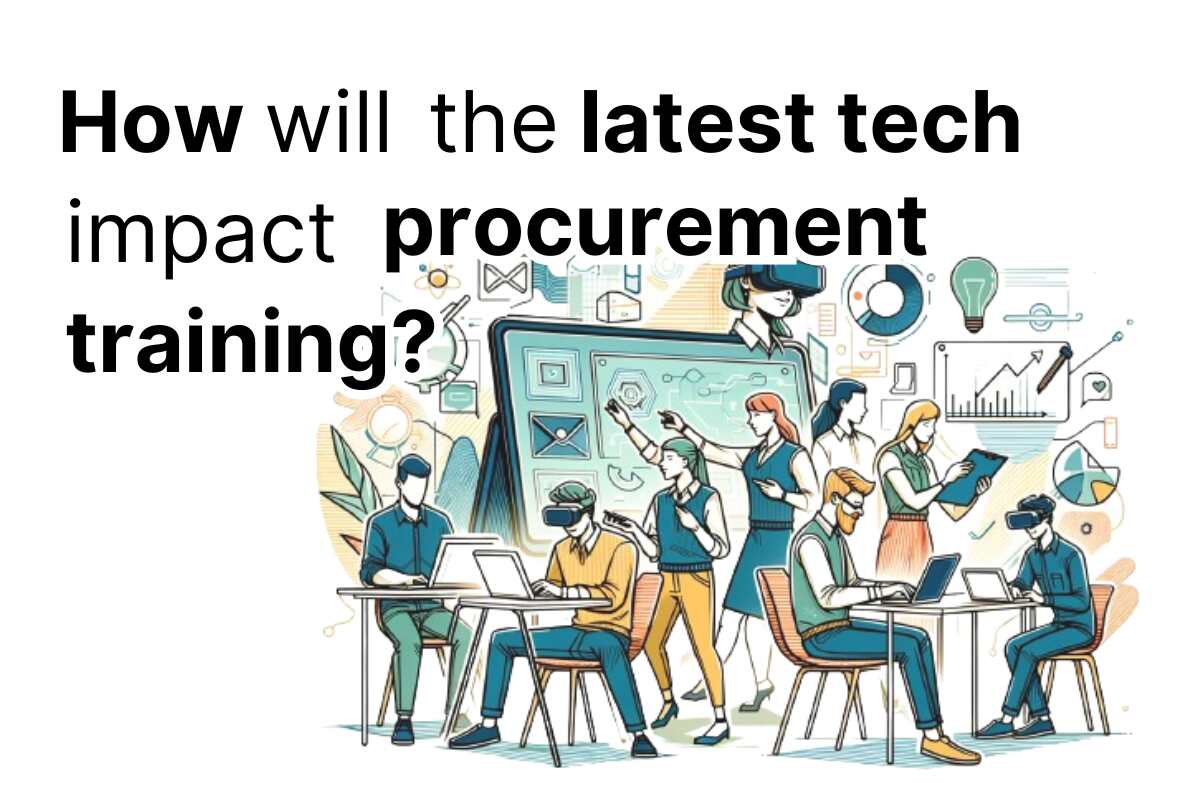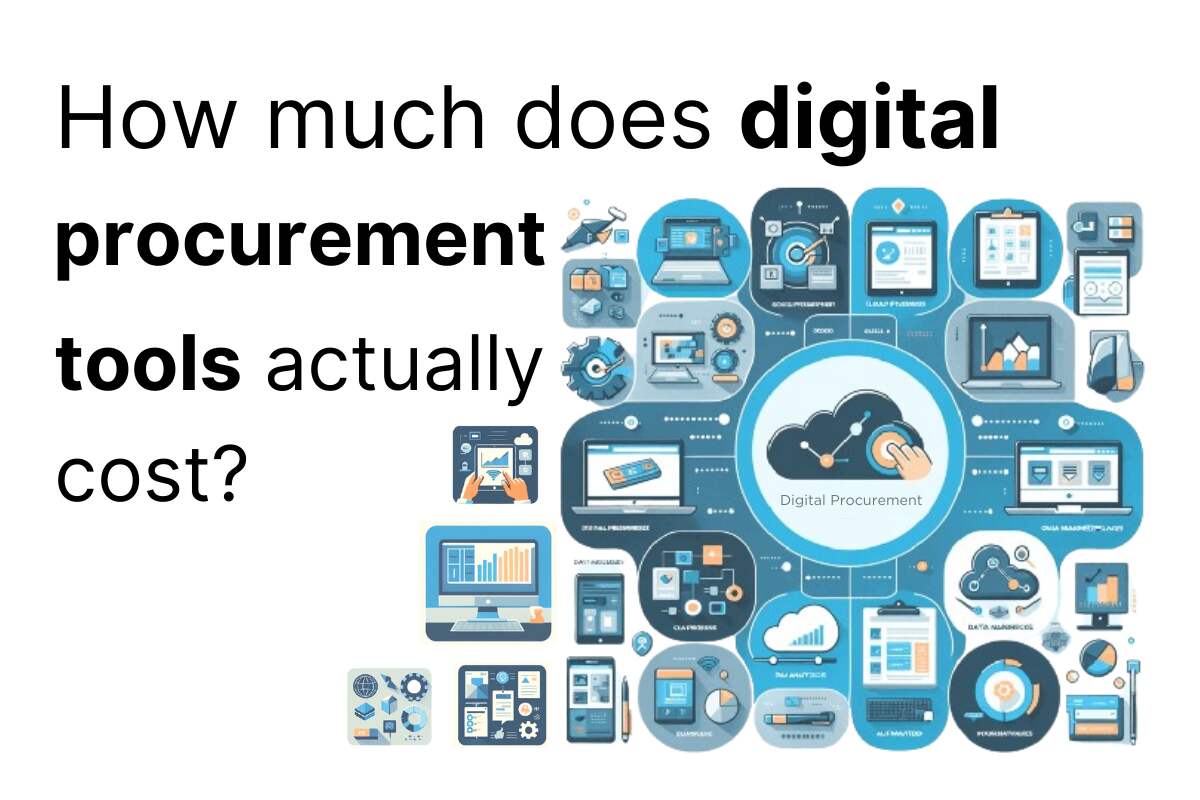If you have been in business for a while, terms like martech, salestech or fintech are not new to you. With information technologies evolving and adding speed to the way companies do business, the rise of tools helping professionals to streamline their processes and make better decisions has only been on the rise.
When it comes to martech (fusion between marketing and technology) as many as 8,000 tools are available today. These help teams to manage the attribution of marketing efforts, plan their campaigns and content, and track marketing generated leads.
Salestech hasn’t fallen behind. With close to 600 tools in the market and sales teams having between 4 and 10 salestech tools in their tech stack. Businesses strive to optimise the job of their salespeople by giving them tools to automate customer outreach and communication. This in turn enables them to manage their pipelines and forecast more accurately.
Fintech, which in some ways is procuretech’s much bigger brother, also hardly needs any introduction. Most of us are familiar with or have used the more famous business-to-consumer (B2C) fintech apps.
Revolut (banking) and eToro (stocks and trading) are just two which have seen explosive growth.
What is procuretech and why has it lagged behind?
Procurement is the function in companies that, on a general level, takes care of sourcing, managing vendors and tracking spend. In the latest years, the need for digital procurement tools has arisen as businesses have entered a more rapid digital transformation process. The experience of COVID-19 also showed that poorly managed vendor master data contributed to some of the delivery delays and supply chain disruption.
However, it is safe to say that the procuretech landscape lags 10 years behind when compared to salestech and martech. In this article, we’ll try to understand why that is, and where procuretech is headed.
Procuretech vs. martech and salestech
The explosion in sales and marketing tools based on technology can be explained by the need of companies to grow and add revenue. This being the case especially in younger companies, startups and scale-ups. Showing growth metrics to their boards and VC investors has been the number one priority for the majority of those.
Spend oversight and optimisation generally receive zero or very little focus when companies are scaling. Typically, this has been more of a priority for traditional industries. However, they are usually laggards when it comes to adopting the latest technology.
Therefore, sales and marketing departments have been receiving all the attention. As a result, their tools enable them to do their jobs in a more efficient manner with better results.
The attention towards procurement usually doesn’t appear in startups and rapid growth companies until Series B – and that’s at the earliest.
What is the role of procurement in different industries?
Historically, the procurement function has simply been seen as more tactical, for buying goods and services and keeping costs down. It’s no surprise that in most cases, this role (especially in manufacturing) has been more administrative in nature. Consequently, it hasn’t received the necessary attention or consideration as a lever to build strategic capabilities in a company.
There are some industries we can consider as the early movers in seeing the benefits of a professionalised sourcing function. Textiles, retail and automotive immediately spring to mind. The tight margins and the need to optimise costs in these fields led to a more structured approach to procurement departments and more relevance in their organisations. Again, the attention being focused more on controlling cost rather than driving overall business value.
On the other hand – professional services businesses (banking, insurance, law) and life sciences have typically been the last to invest and centralise their procurement efforts. The reason can be found in their high margins and thus, cost and vendor management not being at the forefront of their critical business priorities.
The approach of tech businesses is slightly different. Tech companies definitely see the value in data analytics and this pans out to contract management, streamlining processes and detailed spend analysis.
We can speak of Vodafone and British Telecom (BT) as trailblazers in the procuretech landscape. Vodafone founded in 2008 Vodafone Procurement Company: a subsidiary company managing $24bn spend across Vodafone ecosystem “with digital and pioneering procurement practices”. BT also launched BT Sourced in 2021 in a similar effort, aiming to be a world-leading procurement services subsidiary of the global telecoms giant. Giants like Amazon and Google haven’t lagged behind either.
Procuretech isn’t just made for enterprise level businesses
When we talk about embedding digital tools into a procurement function, any startup or growth businesses should understand procuretech as early as possible. And while you won’t require feature-rich sourcing or contract management tools at this stage, an affordable procure-to-pay (P2P) and source-to-contract (S2C) solution will easily deliver return on investment (ROI).
There are plenty of these tools aimed at SMEs and growth businesses too. These are usually not the household names you’ve heard of. These best-of-breed procurement technology startups don’t have massive marketing budgets to sponsor glitzy conferences.
By understanding the procuretech landscape, any rapidly scaling startup can avoid bad practices further down the road. If you have an IPO or an exit strategy on the horizon and your spend data and procurement processes are non-existent, then it’s not a good look.
Why hasn’t there been investment in procuretech?
Procurement has been regarded historically as an administrative function and a guardian of spend. Chief Procurement Officers have historically tended to be technocrats, not entrepreneurial or visionary business leaders.
The degree of exposure and interaction with other functions of the enterprise has historically been limited. There wasn’t a compelling story being told about how procurement can help other functions build strategic capabilities that propel the organisation to reach its goals.
Therefore, it is not strange that procurement departments haven’t typically had a budget other than for travel and training. The budget for procurement software usually must therefore be approved by the economic buyer. Typically, this is the CFO.
The lack of strategic visibility of procurement in companies is probably why we haven’t seen many CPOs stepping into a CEO role. Indeed, in many organisations, the CPO or Head of Procurement often sits under the CFO. Consequently, they doen’t even have a seat in the boardroom.
Tim Cook of Apple is the most famous example. Apple has him to thank for how sleek and optimised its supply chain is. Historically, the CEO role has been reserved for CFOs or Sales VPs.
Nowadays, given inflation and geopolitical instability, we see more and more COOs and VPs of Supply Chain step into executive leadership positions. That may even in future include more Chief Procurement Officers.
How is the future outlook for procuretech?
Although it is growing, procuretech is still a fraction of the huge market of martech and salestech solutions. Furthermore, it’s far away from those in terms of maturity and industry consolidation. A setup of procurement tools inside an “App Store” functionality, with seamless integrations within Source-to-Pay and Source-to-Contract suites hasn’t appeared until early 2021. SAP Ariba and Coupa are now offering these functionalities.
Coupa and Workday are positioning themselves as an alternative ERP altogether. In the case of Coupa, catering to Supply Chain and Spend Management operations. Workday, in contrast, has honed in on Finance, People and Planning operations.
The outlook for procuretech is bright. Procurement analytics is predicted to grow from USD 2.6 billion in 2021 to USD 8.0 billion by 2026, at a CAGR of 25,3%. The post-pandemic business environment has moved 61% of companies to expect an accelerated digital transformation.
Procurement teams will therefore be seeking tools to optimise contract management, analyse spend and focus on managing strategic vendors. These will all reduce the administrative workload and the costs as much as possible. Furthermore, procurement is poised to gain visibility, as companies need a reliable supply chain and meet ESG goals. As the demand for these needs increases, we’re likely to see procuretech (along with supply chain and legaltech) blossom.
It’s time for procuretech to shine. Watching this still relatively small and young ecosystem grow, mature and consolidate is going to be a very interesting journey.
Elena Díaz is a B2B sales executive, demand generation marketer and writer. She is focused on delivering insight to executives that help them make the right decisions for their businesses.


